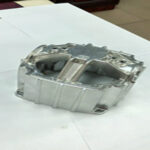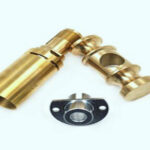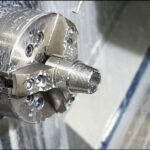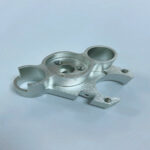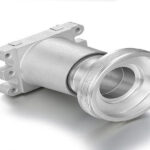From a geometric point of view, the skew rolling process is a pair of conjugate curved surfaces with the surface of the rolling piece and the pass surface of the milk roller. Therefore, many experts apply the theory of conjugate surface to conduct a more comprehensive and in-depth analysis and research on the roller surface theory of the oblique milk technology, and give a mathematical description of the ideal roller surface, but it is necessary to process such an ideal roller surface. Need 5-axis linkage CNC lathe or grinder (7-axis, y-axis, z-axis, c-axis, blade plane or disc wheel axis swing). Applying the principle of conjugate surface, the mathematical model of the ideal roll-shaped surface of the skew-rolled ball parts is obtained, and it is pointed out that to process such an ideal roll-shaped surface, a 4-axis CNC lathe (yi axis, Z axis, C axis, The blade plane swings). Obviously, with the current level of mold manufacturing, this is very difficult.
This article will discuss and analyze the numerical control turning technology of skew rolling ball parts, and analyze the theoretical error of the numerical control turning processing with 3-axis linkage control.
1 Roll surface processing 1.1 Roll top circle surface equation The ideal roll top circle surface is a single-leaf hyperbolic surface of revolution. According to the knowledge of space geometry, the equation is easy to get: the space angle between the line and the axis is also the axis of the inclined roll The included angle with the axis of the rolling piece.
1.2 Solving the equation of roll pass and surface processing. There is a coordinate system in the space. When CNC turning, the model forming knife edge curve spiral generatrix) equation is: when the lathe rotates (that is, 2 axis rotation), the turning tool knife edge curve I moves along the z axis , That is, a variable-lead spiral surface is processed on the roll: when the template forming knife edge curve 1 is a circle, that is, a variable-lead circular spiral surface is processed on the roll.
Assuming that the center of Z is at (ruler, 0) at the starting position, the intersection of the plane where Z is located and the plane is parallel to the x axis, and the angle between the two planes is A, the curve equation of the turning tool blade is: and the application package Comparing the equations of the ideal roll shape and surface obtained by the principle of winding, when Ka)=20%, the equation (6) is the equation of the ideal cavity surface of the skew ball roll. This requires the control of the cutting edge plane to coincide with the spiral surface normal at any time, that is to say, 4-axis linkage control is required to process the ideal hole surface.
In actual production, X) is not a continuous function. It can be expressed as: In order to analyze the processing error, the equation (8) is transformed into a coordinate to obtain the generatrix equation of the hole-shaped surface in the axial plane.
Rotate the coordinate system around the z-axis by an angle to obtain a new coordinate system oxy, and get the equation of formula (8) in the new coordinate system, which is the generatrix equation of the hole-shaped surface in the axial plane
Link to this article:Numerical Control Turning Machining and Error Analysis of Skew Ball Roll
Reprint Statement: If there are no special instructions, all articles on this site are original. Please indicate the source for reprinting.:Cnc Machining,Thank!^^


